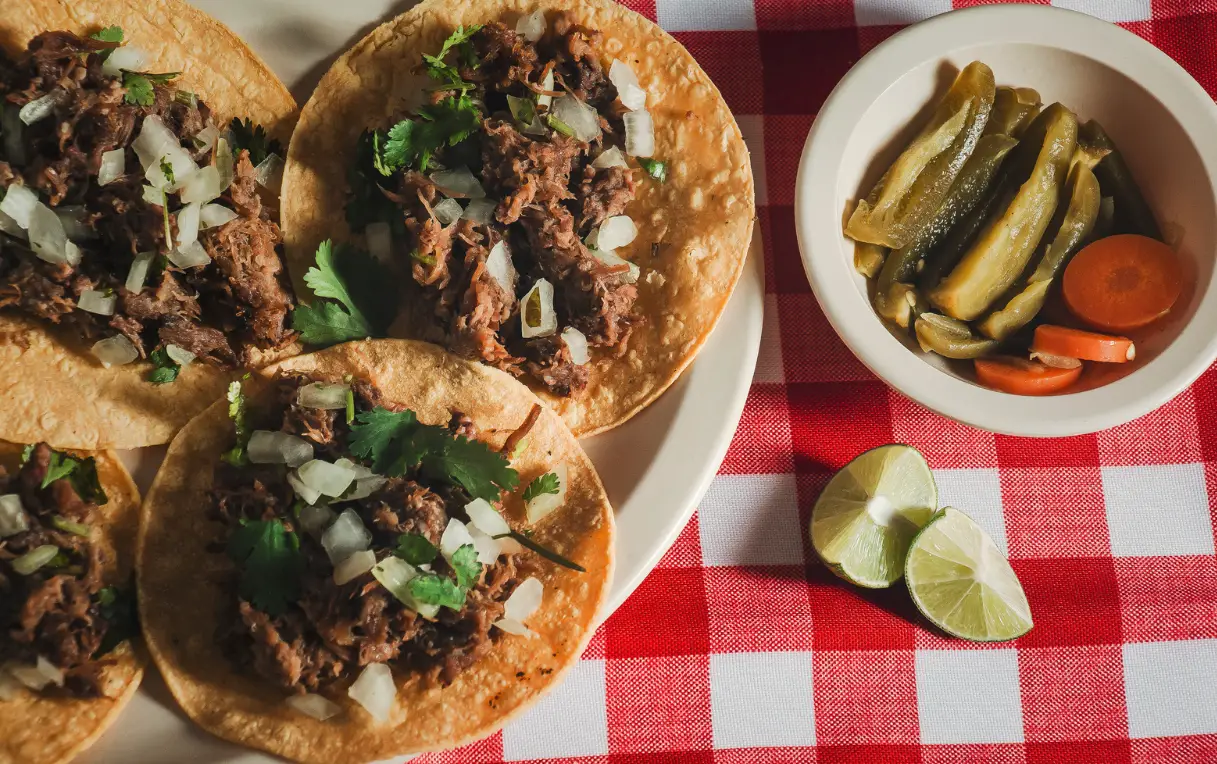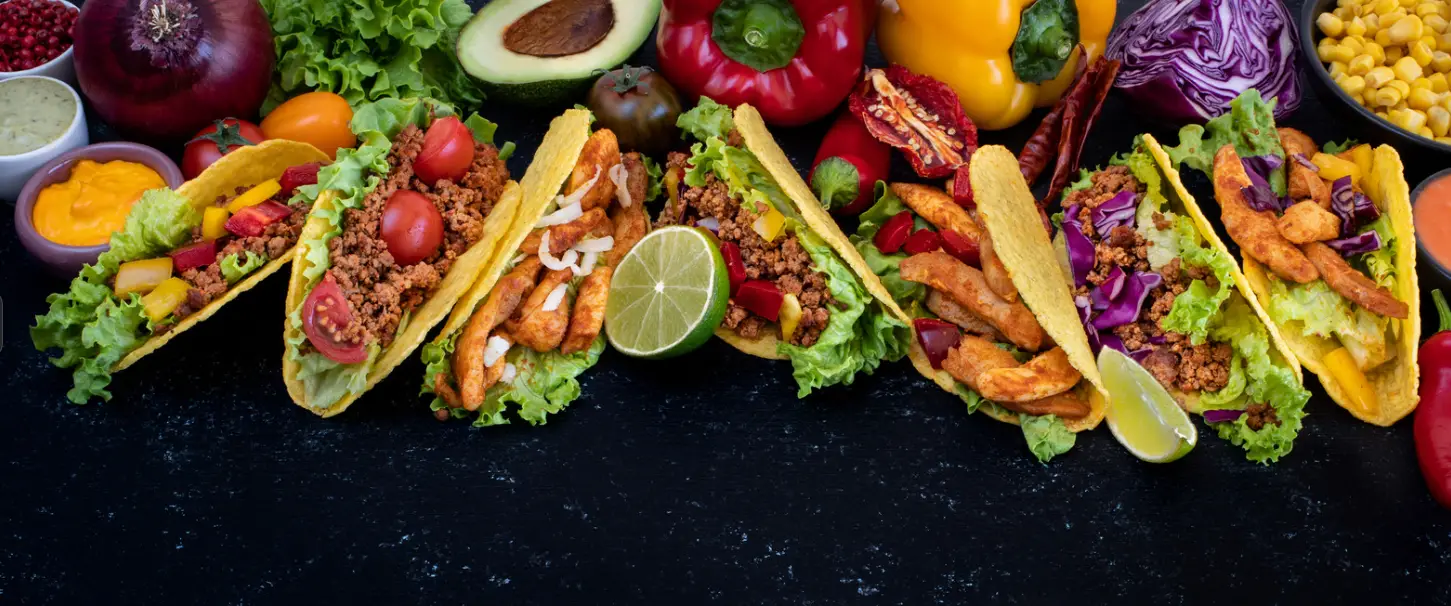Taco Meat Recipe, a staple in many households and a centerpiece of countless delightful meals, has evolved from a simple Mexican street food to a global culinary sensation. In this comprehensive guide, we delve into the art of making the perfect taco meat, a journey that promises to transform your taco nights into an unforgettable culinary experience. Whether you’re a seasoned chef or a home cook, this guide will equip you with the knowledge and skills to create mouth-watering taco meat that tantalizes the taste buds and brings people together.
In the following sections, we will explore the rich history of taco meat, the best ingredients to use, and step-by-step cooking instructions. We’ll also dive into innovative variations, ideal toppings, and essential tips for storing and reheating your taco meat. With a focus on both traditional and modern approaches, this guide aims to cater to all tastes and preferences. So, let’s embark on this flavorful journey and unlock the secrets to making the best taco meat that will have your guests coming back for more.
History and Origin of Taco Meat Recipe
The story of taco meat is as rich and diverse as the flavors it encompasses. Tacos, originally a Mexican street food, have been a part of Mexican cuisine for centuries. The exact origins are debated, but many believe they were first popularized by Mexican silver miners in the 18th century. The word “taco” itself refers to the dynamite used in the mines, which resembled the rolled-up tortillas filled with meat.
Over time, tacos and taco meat have undergone a remarkable evolution. From the simple fillings of fish, beef, or pork, used by the miners, to the diverse and elaborate versions we see today, taco meat has become a canvas for culinary creativity. The introduction of various spices, cooking techniques, and ingredients from different cultures has enriched its flavor profile, making it a beloved dish worldwide.
This historical journey of taco meat is not just about the dish itself, but also about the cultural fusion and culinary innovation it represents. As we explore the various aspects of making taco meat, we keep in mind this rich heritage that adds depth and character to every bite.
Selecting the Right Ingredients
The secret to exceptional taco meat lies in the choice of ingredients. Each component plays a crucial role in creating a dish that’s bursting with flavor and texture.
Types of Meat:
The most traditional choice for taco meat is ground beef, particularly a leaner cut like 80/20, which offers a perfect balance of flavor and texture. However, the versatility of taco meat allows for various meats to be used. Ground chicken and turkey are excellent leaner alternatives, offering a lighter but equally tasty option. For a richer flavor, some opt for pork or even a blend of different meats.
Vegetarian and Vegan Alternatives: For those who prefer plant-based options, there’s no need to miss out on the taco experience. Ingredients like lentils, quinoa, or textured vegetable protein (TVP) can be used as meat substitutes. These alternatives not only mimic the texture of ground meat but also absorb flavors well, making them ideal for taco fillings.
Importance of Freshness:
Freshness is key in maximizing the flavor of your taco meat. Freshly ground meat, vibrant vegetables, and herbs can elevate your dish from good to great. It’s always recommended to source your ingredients from trusted suppliers or local markets where freshness is a priority.
Spices and Seasonings:
The spices used in taco meat recipe are what truly define its character. A blend of chili powder, cumin, garlic powder, onion powder, and paprika is commonly used. Each spice contributes its unique flavor, creating a complex and harmonious blend. Adjusting the ratios of these spices can tailor the heat and flavor profile to your liking.
Additional Ingredients:
Beyond meat and spices, other ingredients like onions, garlic, and bell peppers add depth and richness to the taco meat recipe. For a tangy twist, some recipes include tomato sauce or salsa, which also helps in keeping the meat moist and flavorful.
In summary, the right ingredients are the foundation of delicious taco meat. Whether you’re using traditional beef or exploring plant-based alternatives, the freshness and quality of your ingredients will determine the success of your dish.
Homemade Taco Seasoning vs. Store-Bought

When it comes to seasoning your taco meat, you have two primary options: homemade taco seasoning or store-bought packets. While both can yield delicious results, there are distinct advantages to making your own.
Homemade Taco Seasoning:
The beauty of homemade seasoning lies in its customization. You can adjust the levels of salt, spice, and individual flavors to suit your taste. A basic homemade taco seasoning might include chili powder, ground cumin, paprika, garlic powder, onion powder, dried oregano, and salt. This blend can be tweaked by adding more chili powder for heat, or a bit of sugar for a hint of sweetness. Moreover, homemade seasoning ensures that you’re using natural ingredients without any preservatives or additives found in some store-bought versions. For those with specific dietary needs, such as a nightshade-free diet, consider this alternative AIP Taco Meat recipe that offers a unique twist on traditional seasonings.
Store-Bought Seasoning:
The convenience of store-bought taco seasoning packets is undeniable. They offer a quick and easy solution, especially on busy weeknights. However, they often come with added salt, preservatives, and sometimes MSG. If you’re in a pinch, they can be a great option, but be sure to read the labels for any ingredients you might want to avoid.
In conclusion, while store-bought taco seasoning can save time, making your own allows for a healthier and more personalized approach to flavoring your taco meat. With homemade seasoning, you have complete control over the ingredients and can create a blend that perfectly matches your palate. Just like with taco seasoning, the possibilities are endless when it comes to flavoring your dishes. Get inspired by our Ultimate Guide to Popcorn Seasoning for more seasoning ideas.
Step-by-Step Cooking Guide
Creating the perfect taco meat recipe is an art that involves a few essential steps. Here’s a detailed guide to ensure your taco meat is flavorful, juicy, and simply irresistible.
- Brown the Meat: Start by heating a skillet over medium heat. Add your choice of ground meat to the hot skillet. The key is to cook the meat until it’s well-browned, which helps in developing deep flavors. If you’re using lean meat like turkey or chicken, you might want to add a little oil to prevent sticking.
- Drain Excess Fat: Once the meat is browned, drain any excess fat. This step is crucial, especially if you’re using a fattier cut of meat. It ensures your taco meat isn’t greasy, maintaining a pleasant texture.
- Add Aromatics: Next, add finely chopped onions and garlic to the meat. Cook until they’re soft and fragrant. This step infuses the meat with a savory depth that’s essential in any good taco meat.
- Incorporate Seasonings: Now, stir in your homemade or store-bought taco seasoning. Ensure the meat is evenly coated with the spices. This is where the magic happens, and your kitchen starts to smell like taco heaven.
- Simmer and Moisturize: Add a splash of tomato sauce or a bit of water to the mix. Let the meat simmer gently. This process allows the flavors to meld together and the meat to absorb the spices, resulting in a moist and flavorful filling.
- Taste and Adjust: Finally, taste your taco meat and adjust the seasoning if necessary. Maybe it needs a pinch more salt or a dash of chili powder for extra heat. Trust your palate and make adjustments accordingly.
Remember, the key to perfect taco meat is patience. Letting the meat simmer and absorb the flavors is crucial for a rich and satisfying outcome.
Innovative Variations of Taco Meat Recipe

Taco meat is wonderfully versatile, and there are numerous ways to put a creative spin on this classic dish. Here are some innovative variations to inspire your next taco night:
- International Flavors: Experiment with different cuisines by incorporating unique spices and ingredients. For instance, try adding some curry powder for an Indian twist or some Italian herbs for a Mediterranean flair.
- Special Dietary Considerations: Cater to various dietary needs by experimenting with alternative ingredients. Use ground turkey or chicken for a lighter version, or go for plant-based options like lentils or tempeh for a vegan-friendly dish.
- Add-Ins for Extra Texture: Consider adding finely chopped vegetables like bell peppers, zucchini, or mushrooms to your taco meat. Not only do they add nutritional value, but they also provide an interesting texture contrast.
- Sweet and Spicy Combinations: For those who enjoy a balance of flavors, try adding a touch of sweetness to your taco meat. Ingredients like pineapple, mango, or even a splash of honey can create a delightful sweet and spicy combo.
- Cheese-Infused Taco Meat: For a decadent twist, mix in some grated cheese towards the end of the cooking process. This adds a creamy, rich texture that’s hard to resist.
These variations are just the beginning. The beauty of taco meat lies in its ability to be adapted and transformed according to your taste and creativity. So, don’t be afraid to experiment and discover your own signature taco meat recipe. For those who love experimenting with fusion cuisine, check out our unique take on Birria Ramen, blending Mexican and Japanese flavors.
Toppings and Accompaniments
The right toppings and accompaniments can elevate your taco meat to new heights, adding layers of flavor, texture, and color. Here’s a guide to choosing the perfect additions to complement your taco creation:
- Cheese: A sprinkle of cheese is almost non-negotiable. Options like shredded cheddar, Monterey Jack, or a Mexican cheese blend melt beautifully over the warm meat, adding a creamy texture.
- Fresh Vegetables: Crunchy lettuce, diced tomatoes, and sliced avocados or guacamole add freshness and a crisp texture. They also provide a nice color contrast, making your tacos visually appealing.
- Sour Cream and Salsa: A dollop of sour cream adds a cool, tangy element, balancing the spices in the taco meat. Salsa, whether chunky or smooth, spicy or mild, injects an extra layer of flavor.
- Cilantro and Lime: A sprinkle of chopped cilantro and a squeeze of lime juice can brighten up your tacos, adding a zesty and herby note.
- Pickled Vegetables: For a bit of acidity and crunch, consider adding pickled onions, jalapeños, or even carrots. They introduce a delightful tang that cuts through the richness of the meat.
Remember, the key is balance. You want a mix of textures and flavors that complement, rather than overpower, the star of the show – the taco meat.
Storing and Reheating Tips
Proper storage and reheating are essential to maintaining the quality of your taco meat. Here’s how to keep it tasting as good as it did when freshly made:
- Storing Leftovers: Cool the taco meat completely before storing it. Place it in an airtight container and refrigerate for up to 3-4 days. For longer storage, freeze it in a sealed container or freezer bag for up to 2-3 months.
- Reheating: When reheating, do so gently to retain the moisture and flavor. If using a microwave, cover the meat and heat it in short intervals, stirring occasionally. For stovetop reheating, add a splash of water or broth to the pan to prevent the meat from drying out. Heat it over low to medium heat, stirring frequently.
By following these tips, you can enjoy your delicious taco meat even days after initially preparing it, without sacrificing taste or texture.
Common Mistakes to Avoid
Even the most experienced cooks can encounter pitfalls when preparing taco meat. Being aware of these common mistakes can help you achieve the best results:
- Overcooking the Meat: This can lead to dry, tough taco meat. It’s crucial to cook the meat just until it’s no longer pink, then reduce the heat once you add the seasonings and liquids.
- Skimping on Seasoning: Underseasoning can result in bland taco meat. Don’t be afraid to adjust the spices to suit your taste. Remember, you can always add more, but you can’t take it away.
- Not Draining the Fat: Especially when using higher-fat meats, failing to drain the excess fat can make your taco meat greasy. Take a moment to drain the meat after browning it.
- Ignoring the Power of Fresh Ingredients: Using fresh onions, garlic, and herbs instead of their powdered counterparts can significantly enhance the flavor of your taco meat.
- Forgetting to Taste and Adjust: Always taste your taco meat before serving. Adjusting the seasoning at the end is key to a well-balanced flavor.
By avoiding these common errors, you’ll be well on your way to making delicious, flavorful taco meat that’s sure to impress.
FAQs: Everything You Need to Know About Taco meat recipe
Your Taco meat recipe Questions Answered
Q: How much taco meat should I prepare per person? A: As a general rule, plan for about 2-3 ounces of cooked taco meat per taco. For a group of four, one pound of raw meat should suffice.
Q: Can I make taco meat in advance? A: Absolutely! Taco meat can be made ahead and stored in the refrigerator for 3-4 days or frozen for up to 3 months. Just reheat gently before serving.
Q: What are some healthy alternatives to traditional taco meat? A: For a healthier option, consider using ground turkey or chicken. You can also make vegetarian taco meat using lentils, quinoa, or textured vegetable protein.
Q: How can I add more heat to my taco meat? A: Increase the heat by adding more chili powder, diced jalapeños, or a pinch of cayenne pepper to your seasoning mix.
Q: What are some creative ways to serve taco meat beyond traditional tacos? A: Taco meat is incredibly versatile. Try using it in burritos, salads, nachos, or as a filling for stuffed peppers or quesadillas.
These FAQs cover some of the most common queries related to making and serving taco meat, providing additional insights to enhance your cooking experience.
Conclusion
In this comprehensive guide, we’ve explored the art of making perfect taco meat, from selecting the right ingredients to mastering the cooking process. We’ve also delved into creative variations and essential tips for storage and reheating. By avoiding common mistakes and experimenting with flavors and toppings, you can elevate your taco meat to new culinary heights. Whether you’re cooking for a family dinner or a festive gathering, these tips and tricks will help you create delicious, memorable tacos that everyone will love.
